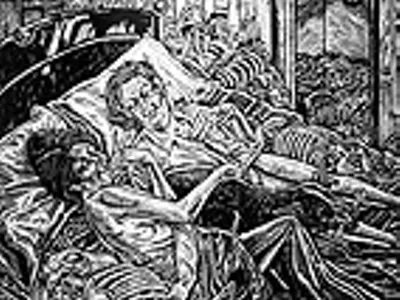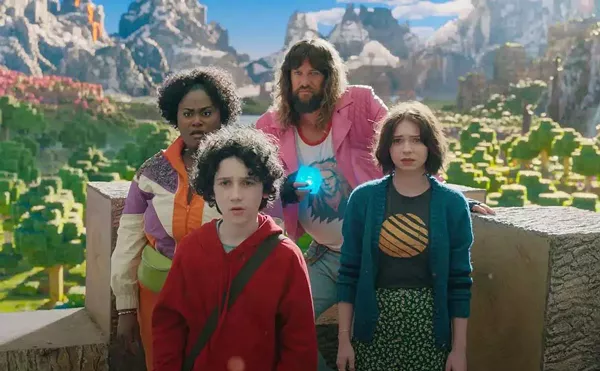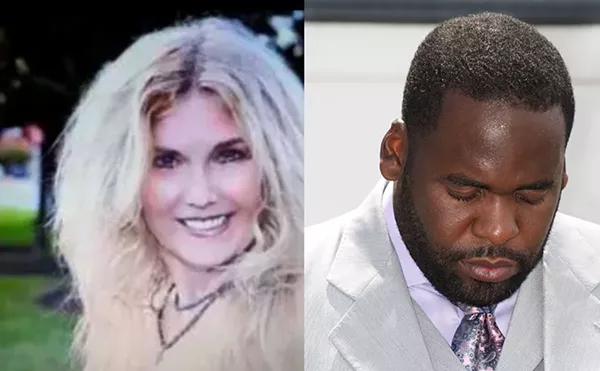If the closet door first swung open in 1969, then over the past 30 years, that same closet has been renovated, remodeled and turned into one of the hottest pieces of real estate in America. It’s replaced the doors with picture windows and added a patio with furniture painted a bright shade of lavender that all the hippest magazines want to feature in their home fashion sections.
In other words, there’s never been a better time than the past 30 years to be gay or lesbian or bisexual or transgendered in America. Or anywhere, for that matter.
From the epicenter of the Stonewall Inn in Greenwich Village, the gay community rioted for three days following a police raid in June 1969, the shock waves of the gay rights movement have rippled outward to touch all parts of society – even the resolutely homophobic ones that are still staunchly exclaiming, "Don’t touch me there!"
And all the while, the cameras have been rolling. After Stonewall: From the Riots to the Millennium is the 90-minute television sequel to Before Stonewall, the Emmy award-winning documentary which shed light on gay and lesbian lives before the late 1960s. In a style similar to the original, After Stonewall documents the societal changes that have come about as a direct – or indirect – result of the Stonewall riots.
Narrated by singer Melissa Etheridge (one of the many "out" celebrities who have made being gay in the ’90s about as scandalous as being left-handed), the documentary finds key touchstones in the events of three decades, from the gay rights sit-ins and marches of the ’70s, to the AIDS epidemic-fueled anger and outrageous protests of the ’80s, to the growing acceptance of homosexuality in the mainstream – from openly gay politicians and celebrities to the all-but-legal status of gay marriage – in the ’90s. Just a few of the touchstones: the rise (and fall) of gay bathhouses, gay and lesbian politicians and the assassination of San Francisco politician Harvey Milk, the beginnings of the AIDS epidemic and the Names Project quilt, grassroots organizing to help those with AIDS, the Michigan Womyn’s Music Festival and the rise of lesbian singer-songwriters, several marches on Washington for gay rights, gay characters appearing in mainstream Hollywood movies, ACT-UP’s AIDS awareness protests, the Gay Games (which parallels the Olympics but allows athletes to be open about their sexuality), drag performers, gays and lesbians in the military, the controversy around a children’s book which features lesbian mothers – the list goes on, and on.
In covering so much ground in 90 minutes, it’s inevitable that producer John Scagliotti didn’t have enough time to delve deeply into each subject, worthy of a documentary in its own right. Some elements of the gay and lesbian movement, such as the controversy over pornography and freedom of expression, are barely touched upon, while other aspects of life after Stonewall seem to garner a little too much attention.
For example, perhaps too much screen time is given to the religious rightists and their homophobic venom: Ridiculous Jerry Falwell, bigoted Senator Jesse Helms and the egregiously homophobic Anita (Save Our Children) Bryant all have their say. Ronald Reagan’s anti-gay statements on the eve of his presidential election, and Bill Clinton’s wishy-washy "Don’t Ask, Don’t Tell" policy on gays in the military (quietly signed after promises of a toothier policy) are also documented.
Happily, in the context of After Stonewall’s celebration of social change, such regressive points of view come across as even more offensive than they were to begin with.
A counterpoint comes with the documentary’s lively interviews with gay and lesbian celebrities such as author Rita Mae Brown, novelist Armistead Maupin and politician U.S. Rep. Barney Frank, D-Mass. Some out and proud celebs, such as k.d. lang, Ellen DeGeneres and RuPaul, aren’t interviewed, but their now-famous stories are as familiar as their faces anyway.
Like Before Stonewall, After is more than just an education for a straight audience or an empowering retrospective for a gay and lesbian audience. It’s a fast-paced, thought-provoking documentary that is a reassurance, in an age where hate crimes against homosexuals still happen, that as closet doors open, so do most people’s minds.
Perhaps some of the key events documented would have eventually happened without the catalyst of the Stonewall riots. Others, however, would simply never have occurred. Either way, though, one thing is certain: After Stonewall, thankfully, nothing would be the same again.






